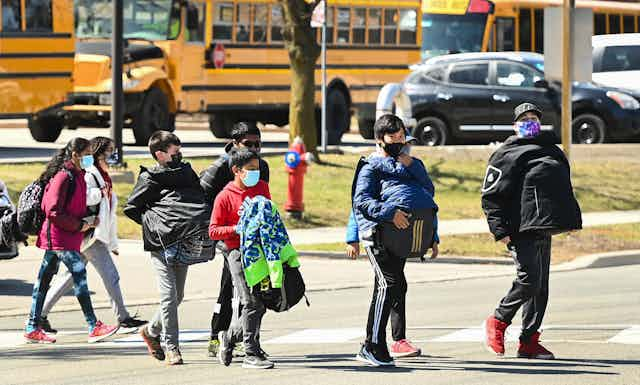Three years into the pandemic, it’s clear that Canada’s provinces have been hampered by a lack of a comparative cross-Canada analysis of school closures and the effects on students.
What we do know about the disruptive impact of school closures on Ontario and other provinces comes largely from a June 2021 Ontario Science Table study documenting the extent of school closures from province-to-province.
Four mass school closures in Ontario cost Kindergarten to Grade 12 students some 28 weeks of schooling since March 2020, far more than the average lost time in Europe (10 weeks) or in Europe and North America considered together (17 weeks).
Most other Canadian provinces were close behind Ontario, with Nova Scotia and New Brunswick, for example, checking in at 20 to 22 weeks of disrupted instructional time by June of 2021.
Revamping standardized testing could be part of the solution, but Ontario’s incoming government after the June 2 election will also have its work cut out for it in restoring the public’s faith after extensive closures.
Fallout of school closures
Schools are now confronting the fallout of pandemic school closures. A July 2021 follow-up Science Table report identified the cumulative learning loss and social harms inflicted since March 2020.
It recommended that, barring catastrophic circumstances, schools should remain open for in-person learning for the foreseeable future and that school closures, “or transition to an online learning model, should not be used as a public health measure for pandemic control.” That helped bring an end to system-wide closures, but left us with a pandemic generation well behind in their academic progress and social development.
Read more: 'Generation C': Why investing in early childhood is critical after COVID-19
Speaking in January 2022 on TVO’s The Agenda, Western University education professor Prachi Srivastava said: “I’m shocked at the lack of planning, at the lack of forward planning in the face of what is quite a predictable outcome,” referring to the short- and long-term consequences of mass school closures.
Canada’s learning recovery
A recent April 2022 Ontario education research report proclaimed in capital letters “CANADA HAS BEEN A LAGGARD ON EDUCATIONAL RECOVERY.”
That Laurier University Centre for Leading Research in Education report was prepared by education researchers Kelly Gallagher-Mackay and Steve Sider, with a group of 34 education leaders and researchers. It confirmed what international education researchers have known for some time: “other countries have invested far more than Canada in learning recovery and started sooner.”

This is hard to fathom when Canada, as a G7 country, is one of the world’s seven most highly industrialized and relatively well-resourced liberal democracies.
As my research has examined, across the country there are extensive educational bureaucracies, while the country has, relatively speaking, one of the smallest cohorts of children, with some 5.1 million in elementary and secondary school.
Holes in COVID-related education recovery plans
An initial February 2022 pan-Canadian scan of Canadian K-12 COVID-related education plans conducted by the Toronto-based not-for-profit, People for Education, found that provinces have uneven strategies related to data collection to track how the pandemic has affected students.
The report says Ontario school boards must report to the Ministry of Education no later than July 31 on a “range of data including things like numbers of exemptions from online learning and alternative approaches provided, and parent and student feedback on impact of remote learning.”
The Laurier Centre’s report notes that education expert Lance McCready called for data disaggregation to ensure that the province grasps the effects of disruptions and interventions on marginalized students. This call follows similar expert advice to overhaul data collection to ensure we are developing targeted approaches to address student needs.
Future of Ontario standardized testing
With Ontario’s Education Quality and Accountability Office (EQAO) testing cancelled during the pandemic, there was no way to assess how that province’s two million students were performing or whether they were recovering.
That was probably a mistake, according to Srivastava, because the EQAO tests could have been used to establish a baseline of student achievement, before, during and after the disruptions.
Ontario restored testing in 2021-22, but it’s going to be difficult to analyze without consistent baseline data.
For whichever party emerges as Ontario’s new government, however they approach the sometimes contentious issue of administering standardized testing, a more coherent, integrated and responsive pandemic education recovery plan targeted to student needs is a matter of immediate necessity.

